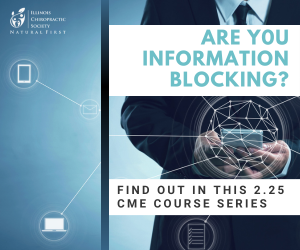
Scoliosis Diagnosis

One sure way to evoke an emotional, visceral reaction from a parent is to tell them that their child has scoliosis. Most people are familiar with the word, and it conjures images of a hunched, Quasimodo figure with a lopsided chest and twisted shoulders and hips. While this appearance certainly is a possible outcome, it is equally certainly not the norm. Nevertheless, the parents worry about deformity that may endanger their child’s life and/or quality of life. It is for this reason that we must be extremely careful when using the term “scoliosis” with our patients.
I bring up these points because sometimes the term “scoliosis” is used without the due discretion that it should command. While it is technically true that any lateral curvature of the spine may be termed “scoliosis,” radiographically we must meet a higher standard in order to make the diagnosis. Plain film radiography has been considered the gold standard for the diagnosis and monitoring of scolioses. In order to make the diagnosis in a responsible and accurate manner, we need to follow certain guidelines. By doing this, we can avoid an unnecessary emotional upset to patients and their parents.
My personal experience is with a patient’s parent who contacted me after I read a thoracic spine x-ray series on her daughter. I listed in the impressions postural alterations that included a lateral spinal convexity that measured less than 10 degrees. I was careful not to use the word “scoliosis”; however, the referring physician did invoke the term. The parent then consulted an orthopedist who stated that scoliosis was not present. The parent then contacted me and chastised me for reporting that her daughter had scoliosis and that her time and money had been wasted by unnecessarily consulting a specialist. Not wishing to cause any further confrontation with anyone, I merely pointed out that I had not made the diagnosis of scoliosis.
In order to properly make the diagnosis of scoliosis from x-ray, the lateral spinal curvature must exceed 10 degrees. Curves measuring between 5 and 10 degrees have been found in up to 15% of school pupils (1) and there is a spontaneous resolution of 3-20% of these individuals. The common right thoracic curvature measuring less than 10 degrees is considered to be physiologic and thought to be due to accommodation to the size and position of the heart, lung, and aorta or to be related to handedness. Also, a slight rotation of the spine at the time of filming can result in an apparent lateral curvature. This is particularly true in cases in which the lumbar lordosis or thoracic kyphosis is exaggerated. If the curvature measures greater than 10 degrees using the Cobb-Lippmann method of mensuration and there is no obvious pelvic rotation, then we can be reasonably sure that the appearance is truly due to a lateral curvature and not the result of patient positioning at the time of filming.
The utmost care must be used when making this measurement and when determining the proper reference points. This is important not just in arriving at an initial measurement but it is also important when comparing future studies that may be required to evaluate possible progression. I will not go into the specifics of how these measurements are made as they are described in great detail in a number of good references, most notably Terry Yochum and Lindsey Rowe’s fine text Essentials of Skeletal Radiology. It is also vitally important to use good quality radiographs, not only to be able to readily identify the reference points necessary to make the angle measurements, but also to identify any associated pathology or congenital anomalies which may be underlying causes of scoliosis.
I have not provided any images in this column, because I am sure all doctors have seen many examples of the abnormality that results in a diagnosis of scoliosis. The purpose of this article is simply to emphasize the need for correct terminology in radiology. Improper use of terminology may result in patient anxiety, unnecessary testing and increased cost and time. Having to confront an angry, frustrated or emotionally upset patient is never a pleasurable experience. To unnecessarily evoke these emotions in a patient is doing a disservice and not acting in the best interest of the patient or our profession.
References
- Yochum T.R., Rowe L.J.: Essentials of Skeletal Radiology, ed 3. Philadelphia, Lippincott Williams & Wilkins, 2005.

















